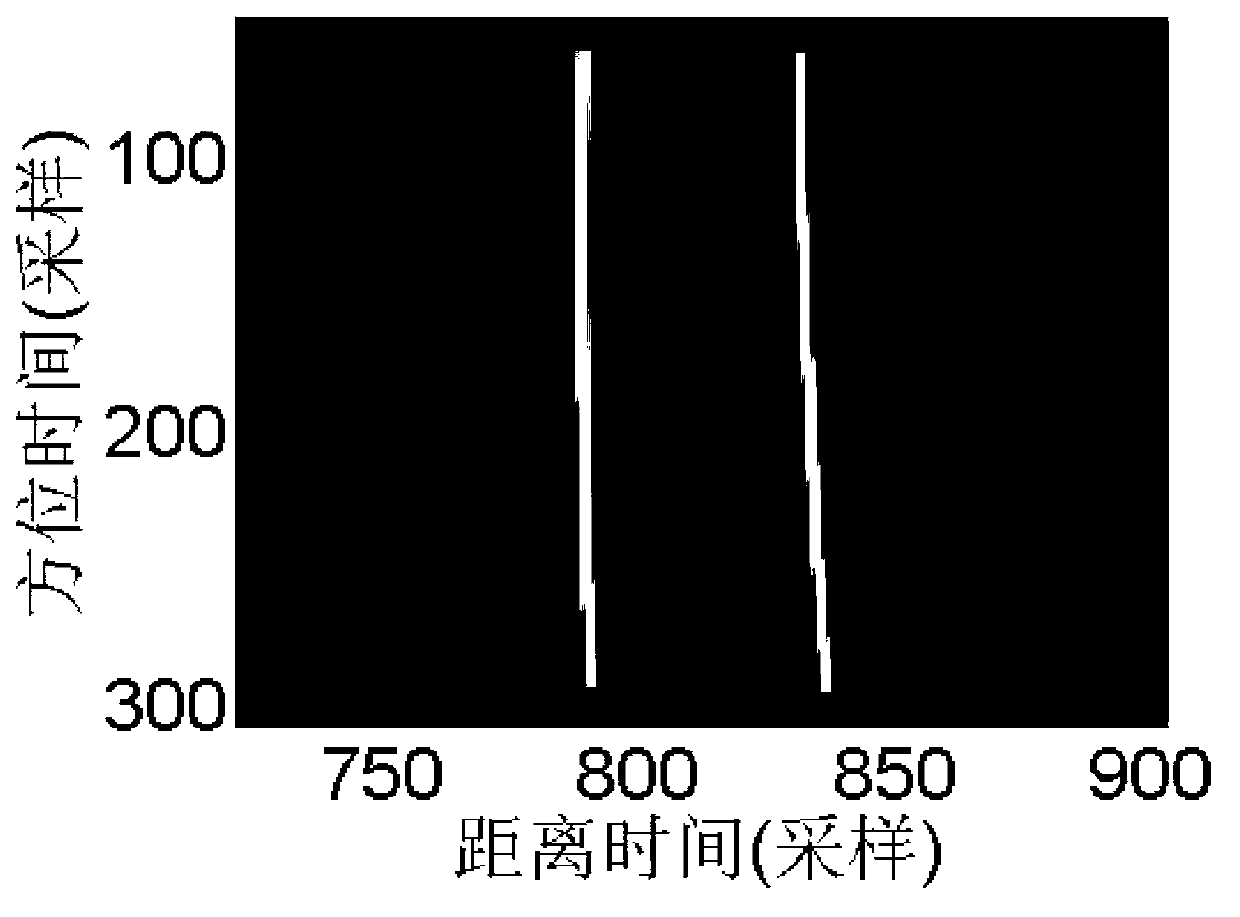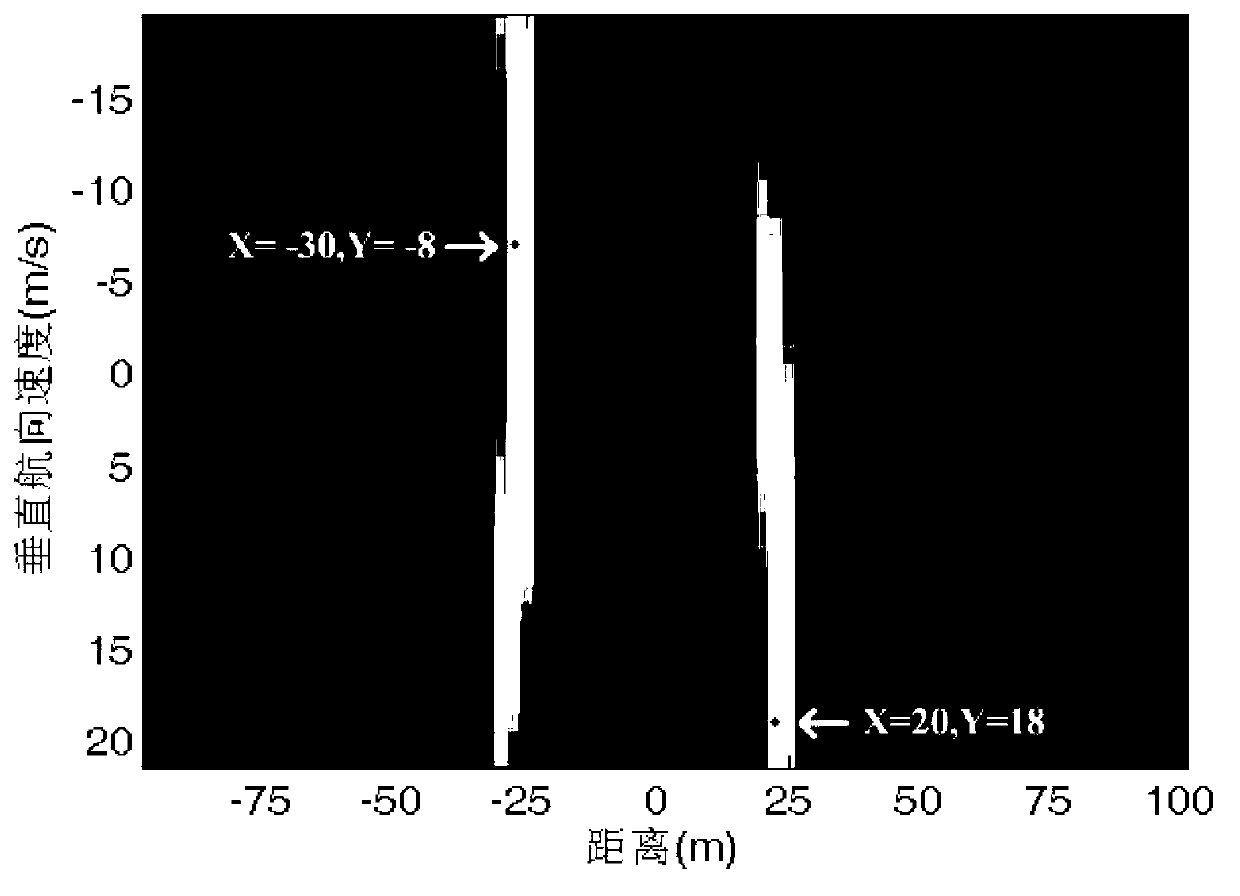Moving-target parameter estimation method of common-rail bistatic synthetic aperture radar (SAR)
A technology of parameter estimation and moving target, which is applied in the field of radar, can solve the problems of incapable of moving target imaging and target tracking, and does not consider the problem of moving target parameter estimation, so as to achieve moving target parameter estimation and eliminate Doppler center frequency ambiguity Effect
- Summary
- Abstract
- Description
- Claims
- Application Information
AI Technical Summary
Problems solved by technology
Method used
Image
Examples
Embodiment Construction
[0030] refer to figure 1 , the implementation steps of the present invention are as follows:
[0031] Step 1: Perform range compression on the radar echo signals of bistatic SAR with different channels.
[0032] First construct a chirp signal whose frequency is opposite to that of the transmitted signal as a reference signal, and then transform the bistatic SAR radar echo signals of different channels and the reference signal into the frequency domain through Fourier transform, and then transform the echo signals in the frequency domain The wave signal is multiplied by the reference signal, and finally the multiplied result is transformed back to the time domain by inverse Fourier transform to complete the distance compression.
[0033] Step 2: Utilize the phase center offset method DPCA to carry out clutter cancellation to the signal after distance compression, and obtain the sparse moving target signal, and its form is:
[0034] s ( ...
PUM
 Login to View More
Login to View More Abstract
Description
Claims
Application Information
 Login to View More
Login to View More - R&D
- Intellectual Property
- Life Sciences
- Materials
- Tech Scout
- Unparalleled Data Quality
- Higher Quality Content
- 60% Fewer Hallucinations
Browse by: Latest US Patents, China's latest patents, Technical Efficacy Thesaurus, Application Domain, Technology Topic, Popular Technical Reports.
© 2025 PatSnap. All rights reserved.Legal|Privacy policy|Modern Slavery Act Transparency Statement|Sitemap|About US| Contact US: help@patsnap.com



